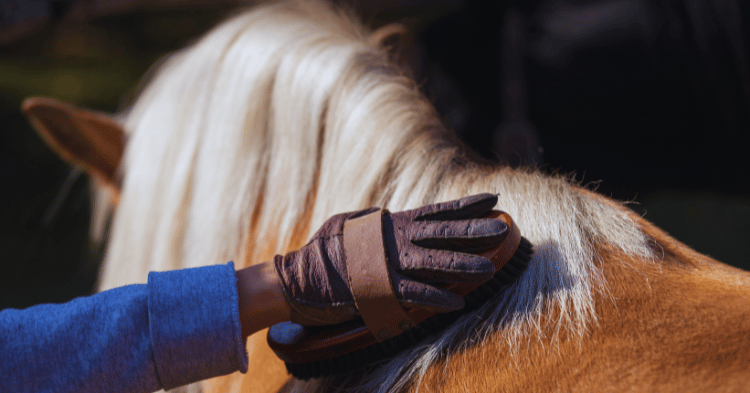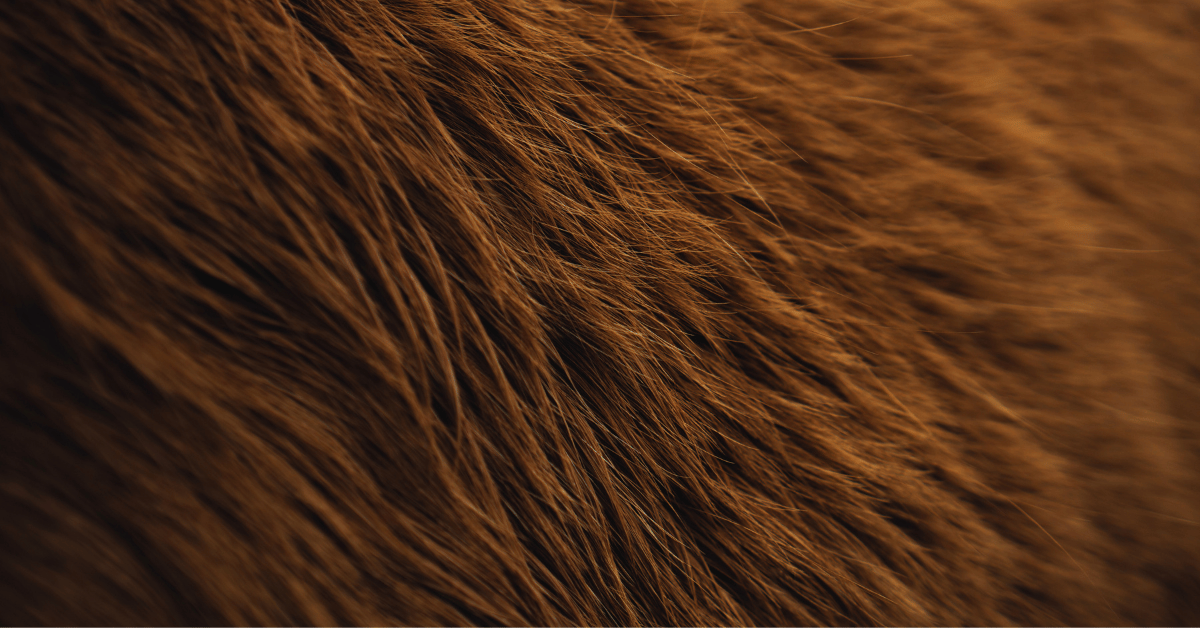Ever looked at a horse and wondered, “Do horses have fur?” It seems like a simple question, yet it opens the door to a fascinating world of equine biology. The problem is, terms like fur, hair, and coat are often used interchangeably, leaving many confused about what actually covers a horse’s body.
Adding to the intrigue, horses boast an impressive array of coat types, each adapted to weather, environment, and even evolutionary needs. This confusion often leaves horse enthusiasts unsure of how to care for their equine friends properly.
But here’s where it gets interesting: beneath the surface of this seemingly mundane query lies the science of thermoregulation, seasonal shedding, and the unique textures that set horses apart from other animals. In this article, we’ll unravel these mysteries, clarify whether horses truly have fur, and explore their coat types to help you become a more informed equine aficionado.
Understanding Horse Hair
Horse anatomy encompasses various types of hair, each serving a unique purpose. Understanding the difference between a horse’s coat and mane, as well as how they change with seasons, is essential for horse owners.

Horse Coat vs. Mane
Horses have two primary types of hair: the coat and the mane. The mane consists of long hair that grows on a horse’s withers to poll, providing protection and a means of swatting away insects. The coat refers to the shorter fur that covers the horse’s whole body, offering protection against the elements and helping to regulate temperature.
| Hair Type | Length | Location | Primary Function |
|---|---|---|---|
| Mane | Long | Withers to Poll | Protection, Insect Swatting |
| Coat | Short | Entire Body | Temperature Regulation, Element Protection |
Seasonal Coat Changes
Horses experience seasonal changes in their coats to adapt to varying weather conditions. During the winter months, horses grow a thicker coat to provide extra warmth, even in warmer climates (Coastal Equine Services). This thicker winter coat helps the horse retain heat but can lead to increased sweating during physical activity.
- Winter Coat: Thicker fur that grows when days are shorter and cooler
- Summer Coat: Lighter fur that develops as days grow longer and warmer
Shedding is a natural process triggered by changes in daylight hours. As daylight hours increase, horses begin to shed their winter coats and grow lighter summer coats. Similarly, as daylight hours decrease, the cycle reverses, and a new winter coat begins to grow.
Research indicates that an extended photoperiod can influence the shedding and growth of a horse’s coat. A study found that an extended photoperiod didn’t reverse winter coat growth when started at the autumnal equinox. However, it successfully maintained the summer coat in stabled horses and accelerated shedding in outdoor horses when initiated a month before the winter solstice.
For more fascinating insights into equine care, visit our articles such as do horses sweat and do horse tails grow back.
Types of Horse Hair

Permanent and Temporary Hair
Horses possess two primary types of hair: permanent and temporary. Much like the coat on a dog’s body, a horse’s body hair is considered temporary. This type of hair grows in cycles, shedding and regrowing in response to seasonal changes and environmental triggers. On the other hand, manes and tails are considered permanent hair, as they don’t shed cyclically and remain consistent throughout the horse’s life.
Moreover, horses have tactile hairs which include whiskers, eyebrows, and ear hair. These tactile hairs play an essential role in helping horses navigate their environment and sense objects around them (source).
Tactile Hairs and Sebum
In addition to the main types of hair, horses also have tactile hairs, which are specialized types of hair that include:
- Whiskers
- Eyebrows
- Ear hair
These tactile hairs are highly sensitive and help horses feel their surroundings, offering them heightened sensory perception.
Sebum is the natural oil produced by a horse’s skin. Sebum serves to create shine, provide antimicrobial protection, and maintain the health of the horse’s coat. The sebaceous glands, which are attached to the hair follicles, produce this essential oil. This natural oil forms the horse’s initial immune system layer, ensuring the coat remains healthy and resilient.
| Type of Hair | Description | Function |
|---|---|---|
| Temporary Hair | Body hair that sheds cyclically | Protection against elements |
| Permanent Hair | Manes and tails, which don’t shed seasonally | Visual appeal, insect deterrent |
| Tactile Hairs | Whiskers, eyebrows, ear hair | Sensory perception |
| Sebum | Natural oil produced by sebaceous glands | Shine, antimicrobial properties |
Understanding the types of horse hair is critical for adequate grooming and care. Whether it’s managing can horse sweat or knowing do horses have udders, knowing the functional aspects of hair types helps in ensuring the well-being of your horse. For more fascinating insights, check out our content on do horses get fleas and do horse tails grow back.
Factors Affecting Horse Hair
Horse hair, including both its coat and mane, undergoes various transformations influenced by numerous factors. Two primary elements impacting horse hair are shedding triggers and the effect of photoperiod.
Shedding Triggers
Shedding is a natural process in horses, initiated by changes in daylight hours. As daylight varies with the seasons, horses adapt by shedding their current coat and growing a new one specifically suited for either winter or summer. This cyclical shedding ensures that horses maintain optimal thermal regulation throughout the year. More details on seasonal coat changes can be found in our seasonal coat changes section.
| Season | Shedding Trigger | New Coat Type |
|---|---|---|
| Spring | Increasing daylight | Summer coat |
| Autumn | Decreasing daylight | Winter coat |
According to HandsOnGloves, this process is primarily driven by the change in daylight hours, not by temperature alone.
Impact of Photoperiod
Photoperiod, or the amount of light exposure during the day, plays a crucial role in regulating horse hair growth. Artificial manipulation of photoperiod, through prolonged light exposure, can influence shedding and hair growth patterns (NIH PMC).
Extended photoperiod can suppress melatonin secretion, lifting prolactin inhibition, and thereby activating moulting. The timing of light application and environmental temperature are critical factors. For instance, extended photoperiod one month after the summer solstice has been shown to maintain the summer coat in stabled horses, but accelerate winter coat growth in stabled ponies.
| Metric | Horses | Ponies |
|---|---|---|
| Effect of extended photoperiod post-summer solstice | Maintains summer coat | Accelerates transition to winter coat |
| Effect of initiating extended photoperiod at autumnal equinox | Does not reverse winter coat growth | Maintains summer coat |
These results reveal that photoperiod manipulation is a nuanced approach that varies among different breeds and environmental conditions.
Understanding the influence of shedding triggers and photoperiod on horse hair can help horse owners provide better care for their animals. For more information on how to care for your horse’s coat, consider reading our articles on can horses sweat and do horses eat hay.
Functional Aspects of Horse Hair
Guard Hair
Guard hair on horses plays a critical role in protecting them from environmental factors. These hairs are long, coarse, and stand upright, helping to shield the horse’s body against rain, snow, and sun. Furthermore, guard hair also serves as a natural barrier against insects and pests, ensuring the horse remains relatively unbothered by these nuisances (Tommie Turvey).
| Feature | Function |
|---|---|
| Length | Long |
| Texture | Coarse |
| Protection | Shields against rain, snow, sun, and repels insects |
For more detailed information on how environmental changes can impact a horse’s hair, feel free to explore our section on shedding triggers and the impact of photoperiod.
Whisker and Mane Hair
Whisker hair, found on a horse’s muzzle, chin, and around the eyes, is small, stiff, and highly sensitive. These hairs aid the horse in detecting its surroundings, helping it navigate and avoid obstacles, especially in low-light conditions.
Mane and tail hair, on the other hand, are typically longer and thicker. They grow along the crest of the neck and from the top of the tailbone. The main functional purpose of this hair is to keep insects away from sensitive areas of the horse’s body, contributing significantly to its overall comfort and appearance (Tommie Turvey).
| Hair Type | Location | Function |
|---|---|---|
| Whisker Hair | Muzzle, chin, around eyes | Detecting surroundings and navigating obstacles |
| Mane and Tail Hair | Crest of the neck, top of tailbone | Keeping insects away and enhancing appearance |
For more insights into horse care and related topics, you can visit our articles on do horses eat hay and do horses drink milk.
By understanding these functional aspects of horse hair, horse owners can ensure they provide the best care for their animals. For more intriguing facts about horses, such as do horses sleep standing up or do horses get ticks, feel free to explore these related articles.

